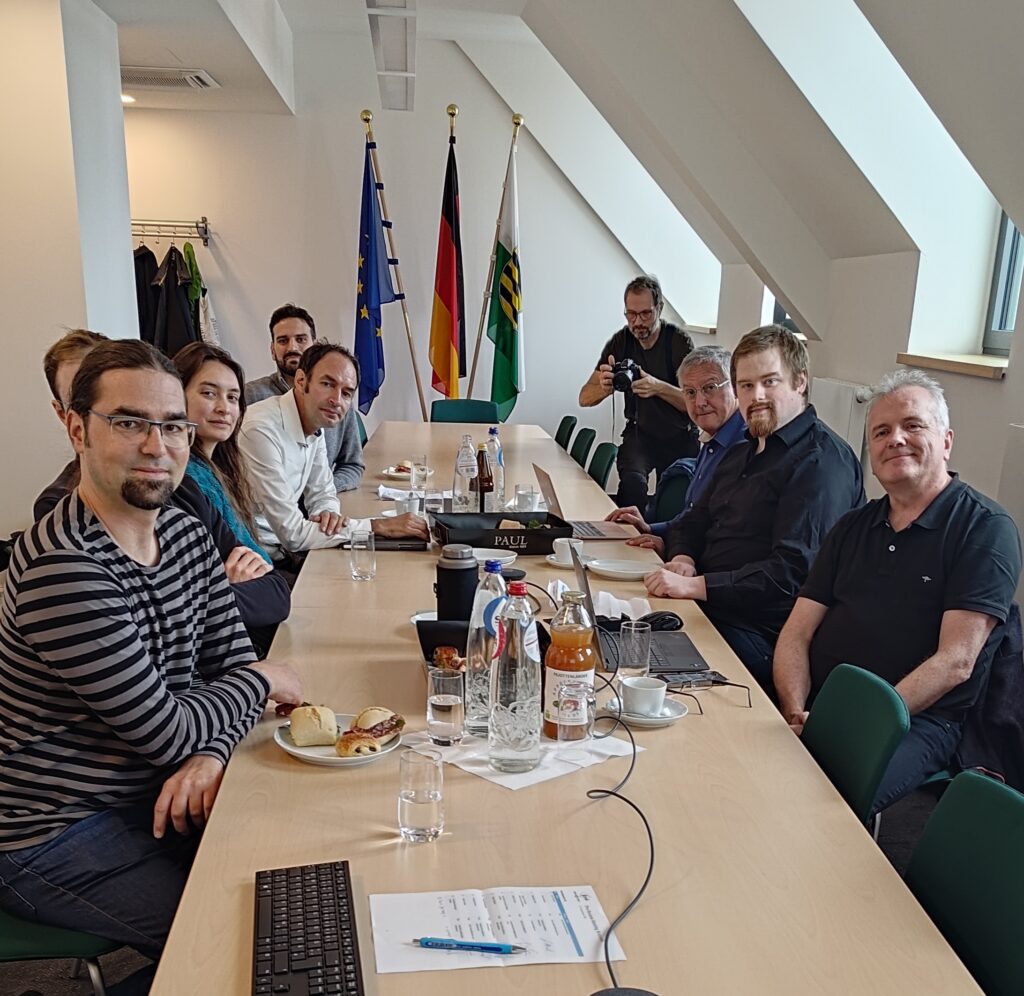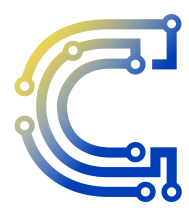It feels incredible to all of us, but SENSOTERIC has been up for almost 2 years now. This means that on late September 2025 we were ready for meeting our Programme Officer (PO) and our Reviewers in order to assess the project results in the first reporting period (RP1).
Such an important meeting, requires careful and deep preparation: all partners must coordinate to show the good progression of their individual tasks but also, and even more importantly, the close collaboration that has been going on between the various institutions. In the case of SENSOTERIC, preparing for the RP1 Meeting has been a great opportunity to sum up everything that went on from the beginning of the project and, putting everything together, have a pretty clear view of the amazing progress that this consortium has shown. On the 23rd of September 2025, all our effort in preparing this meeting climaxed in the last preparation meeting: we were kindly hosted by the Representation of the Free State of Saxony to the EU, located in Brussels.
After the slightly delayed arrival of our colleagues from NaMLab (the disruption of the informatic systems in many European airports struck hard!), we were warmly welcomed by the words of the Advisor of the Saxon State Ministry for Science, Culture, and Tourism, Ngoc Huyen Vu, whose words reminded us of how important it is for us scientists to feel the solid support of the political institutions. Still, a very packed schedule was awaiting afterwards. After an introduction about the strategy for the upcoming meeting given by our project coordinator, Dr.-Ing. Jens Trommer, one by one all the WP leaders presented the status of the work carried out in their institution and discussed with the others about the best strategy to convey the results to our reviewers. Luckily, we were greatly supported by the amazing sandwiches and small desserts provided by the host (see the first photo!).

The hours-long meeting was wrapped up with a 40-minutes group walk back to the hotel during which all the present partners had the chance to tighten even more their relationships beyond the scientific tasks – a close consortium is a successful consortium. Then, after a very great dinner and a good night of sleep we were finally ready to tackle the actual review meeting.
Ready to start at 9:00, we arrived a couple of minutes before: exactly the right time to solve the usual problems with unknown AV system. Once we got familiar with the system, the meeting could start. A very nice welcome speech was delivered by the Programme Officer, followed by the words of the two Reviewers. At that point we were charged up and ready to start: after reporting the financial status with Katharina Amsel’s presentation, Jens Trommer introduced the project and dived into WP1 talking about “RFETs as CMOS Add-on”, followed by the other WP leaders: Walter Weber discussed “NDR RFETs” in WP2, Francois Marc “Device Modeling” for WP3, Klaus Hofmann “Functional Circuit Design” for WP4, Eugenio Cantatore “Analog Front-End” for WP5, Sandro Carrara “Sensor Use-Case Demonstration” for WP6. Giulio Galderisi closed the consortium’s presentation with “Dissemination and Exploitation” for WP7. In between, lunch and coffee breaks gave us the chance to comment on how the review was going. Honestly, we had a great feeling both within ourselves and with respect to the nice and friendly review that we were getting throughout the day. The reviewers’ comments were always fair and oriented at pushing us to give our best. After the deliberation, we sat back together and the reviewers finally disclosed their comments: it was a great success!
We all have pretty much impressed in our mind the moment when the pressure was relieved, we all look at each other, smiled and concluded that we made a great job. We laughed and congratulated each other, grateful for how everything went on that day.


Leave a Reply